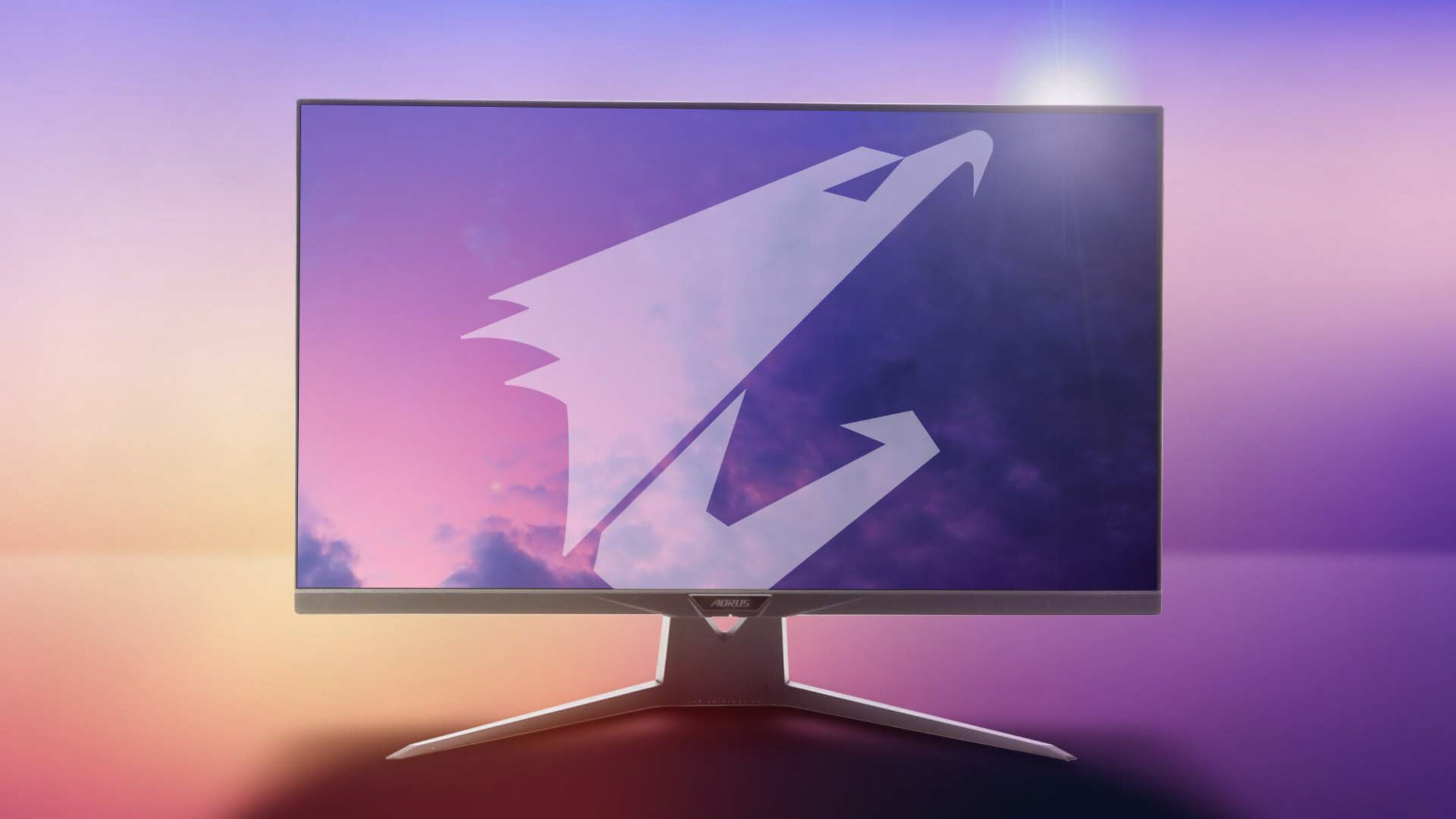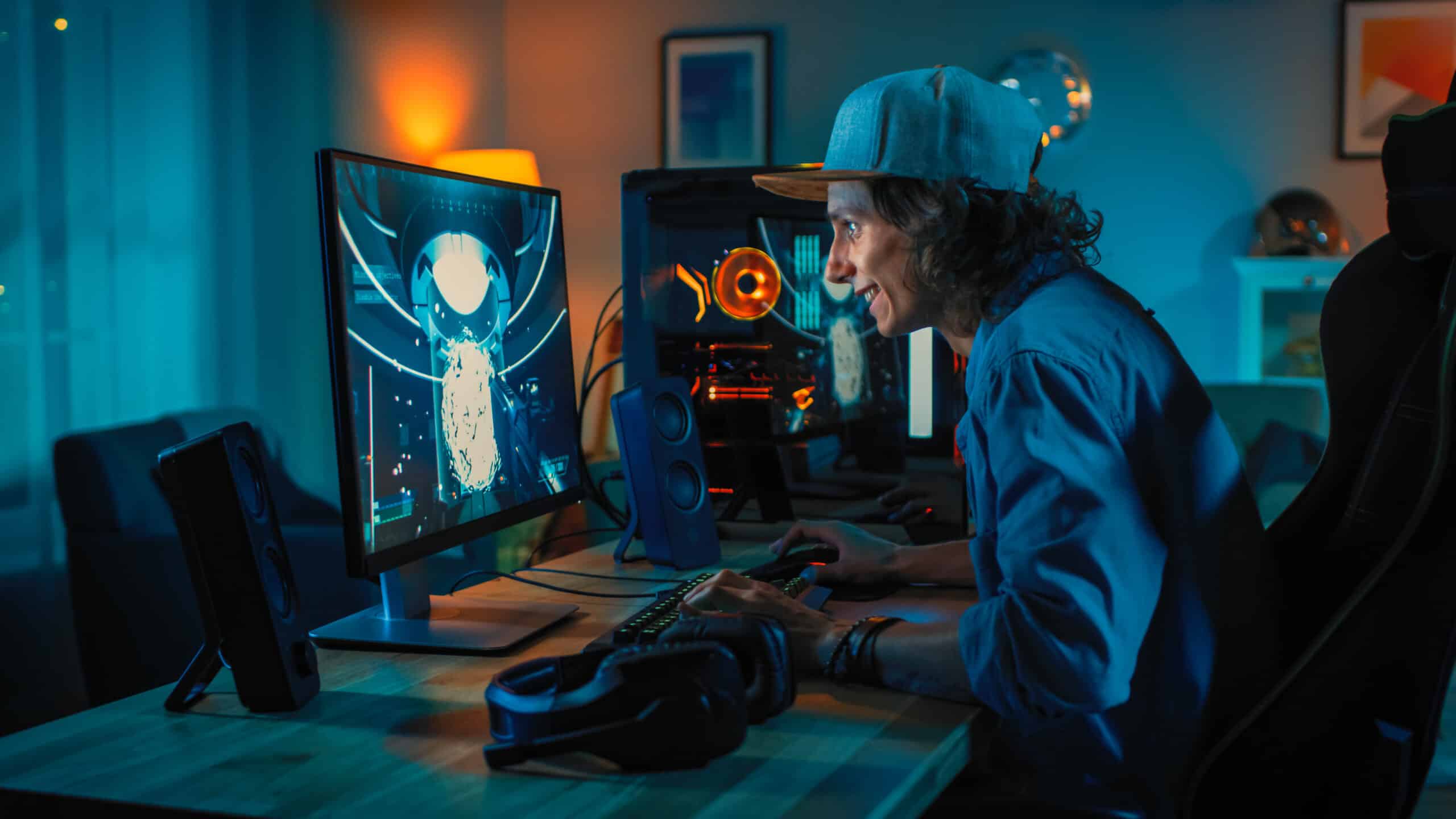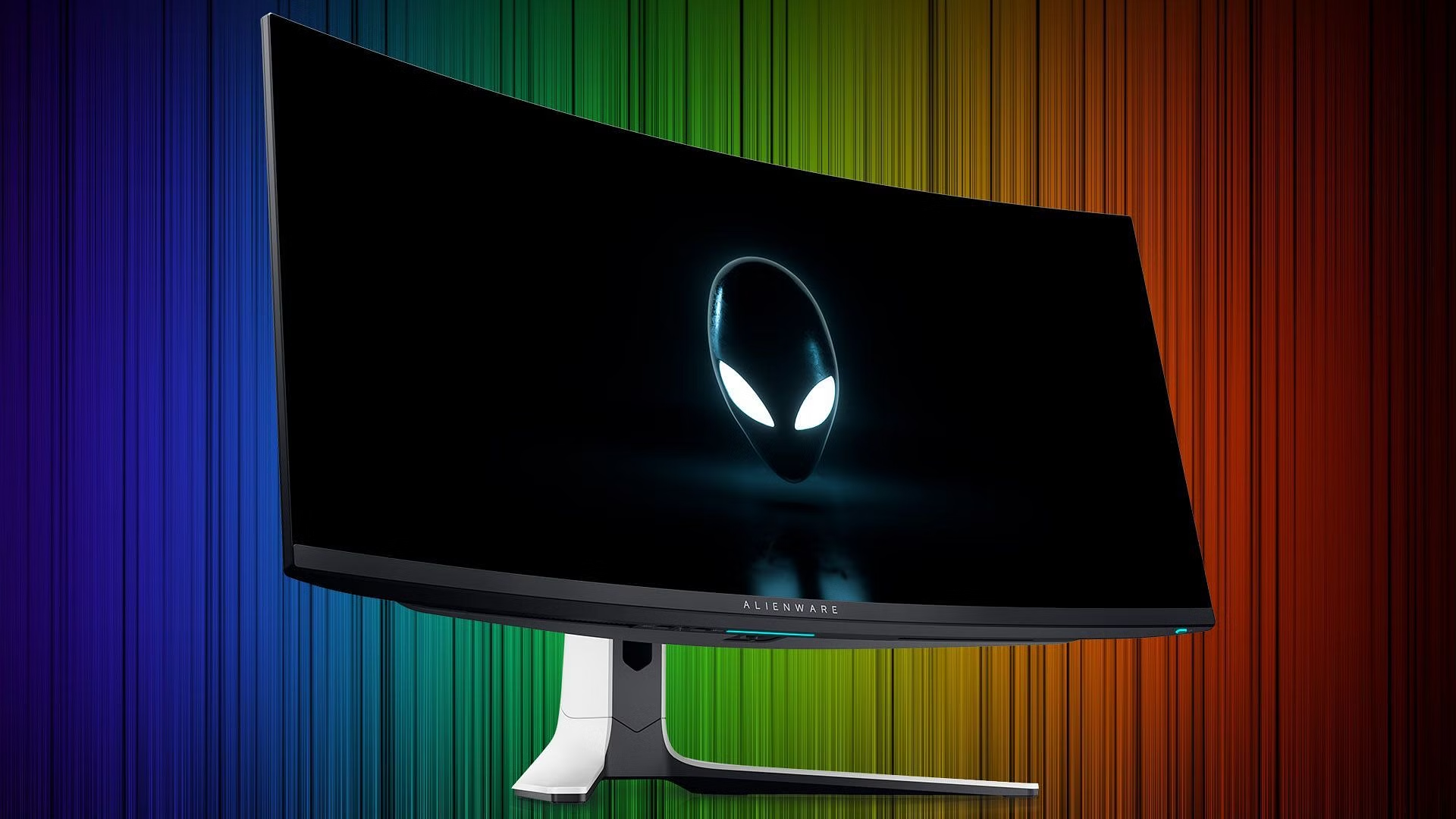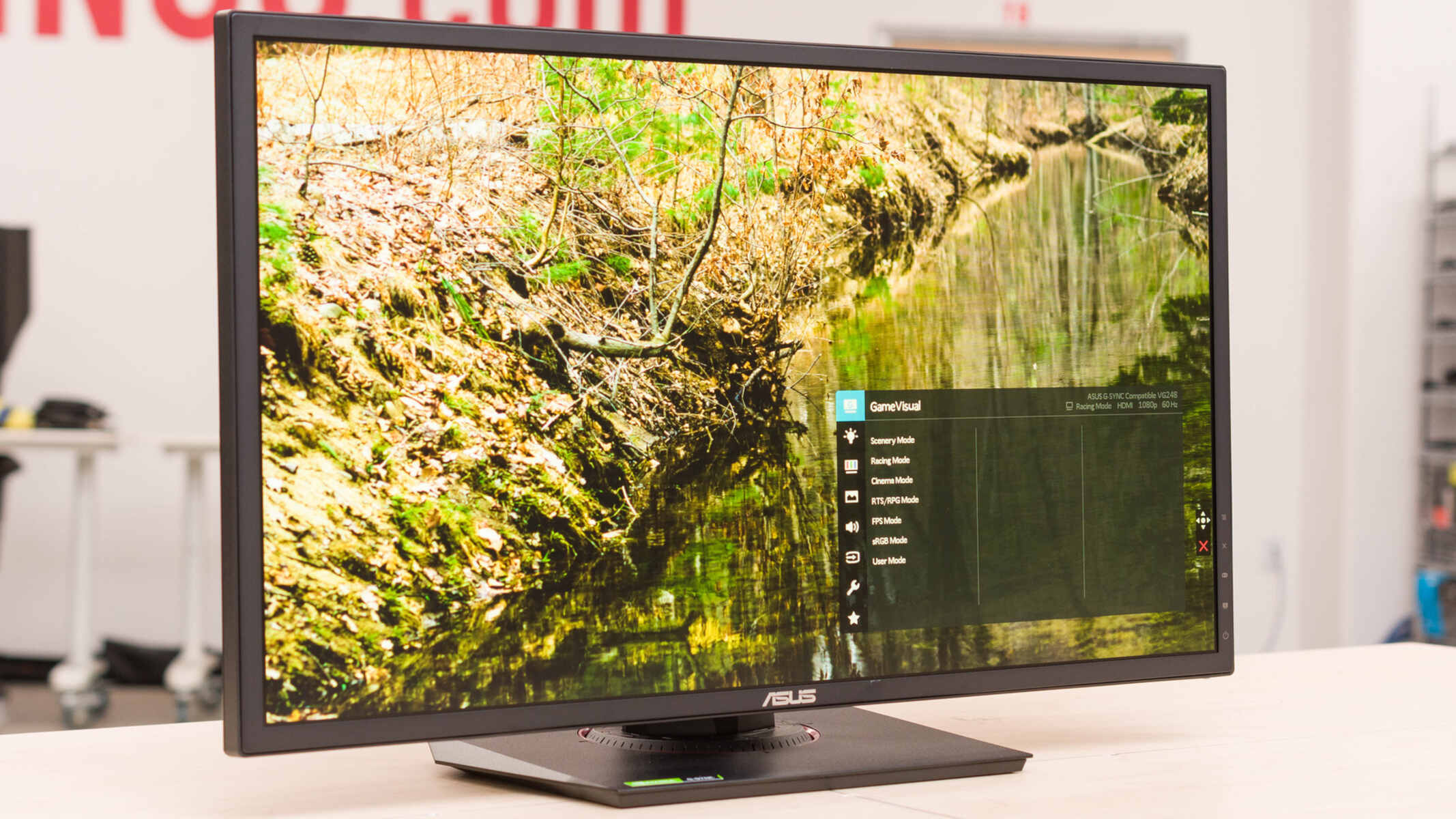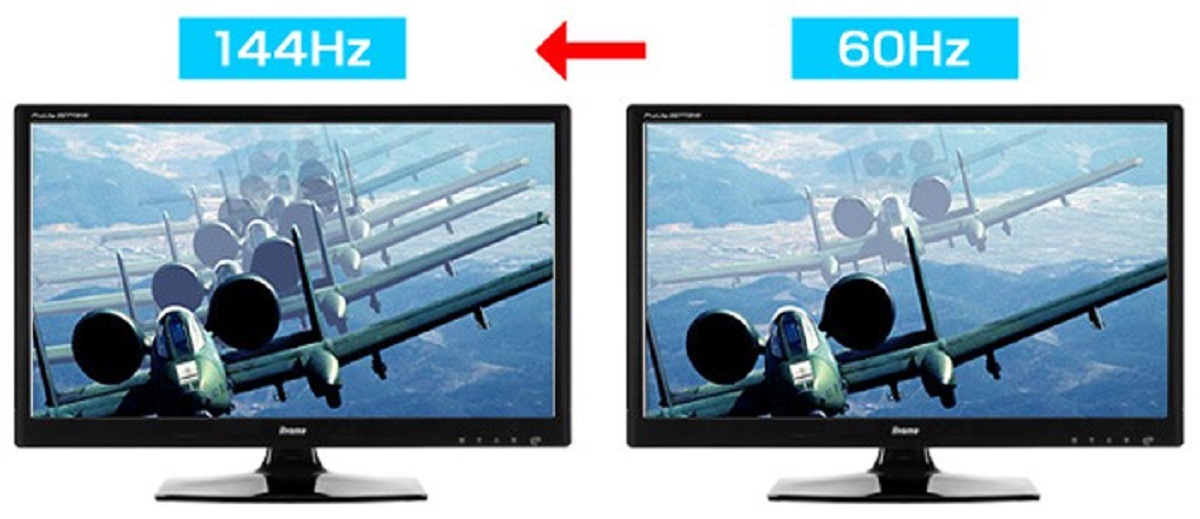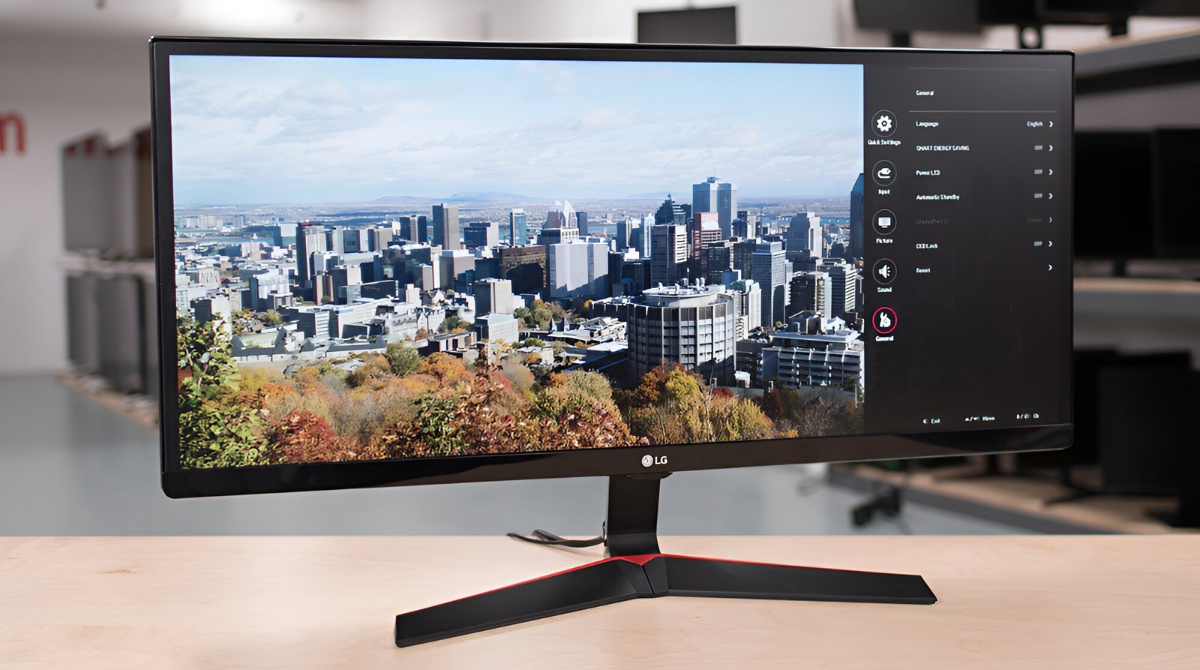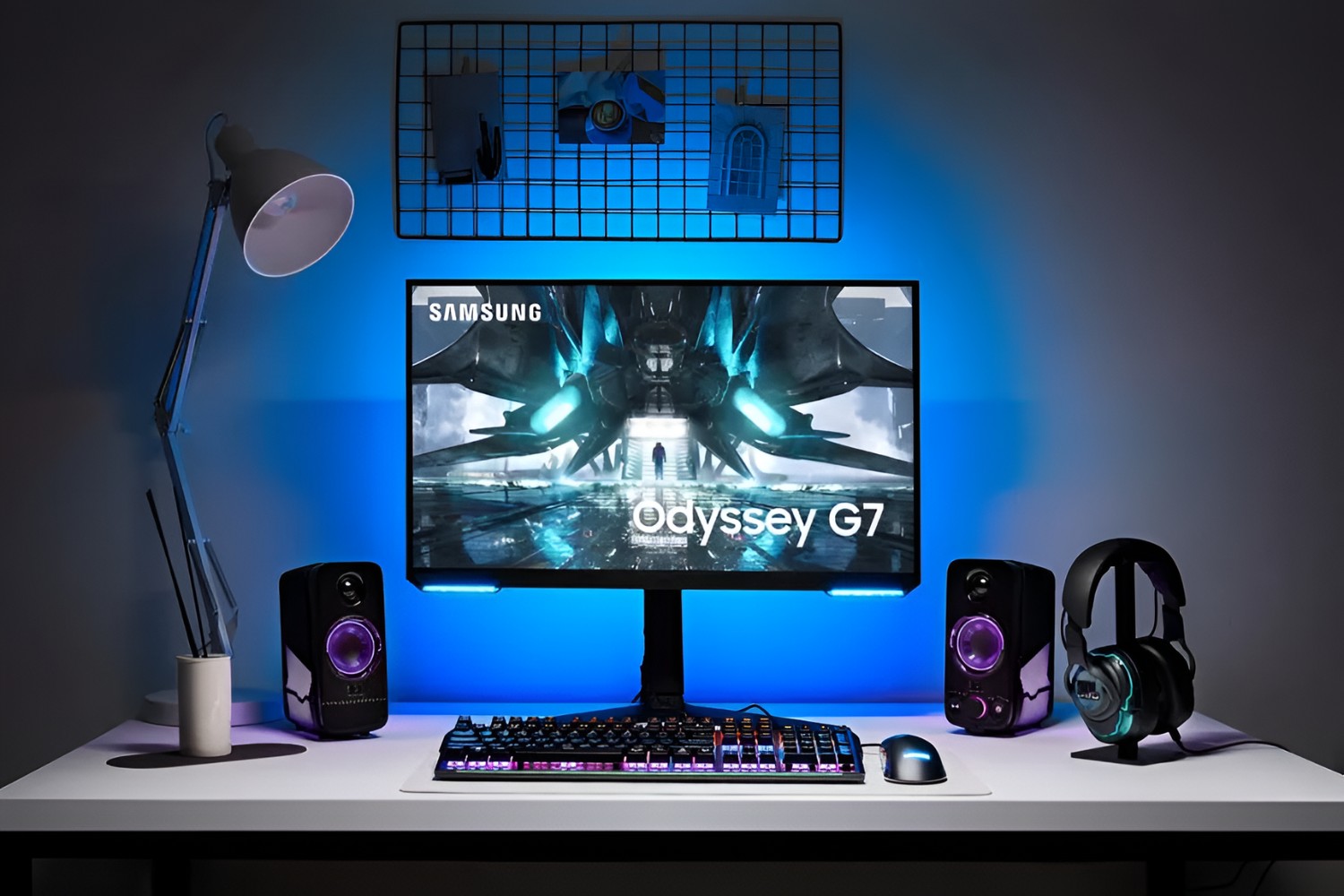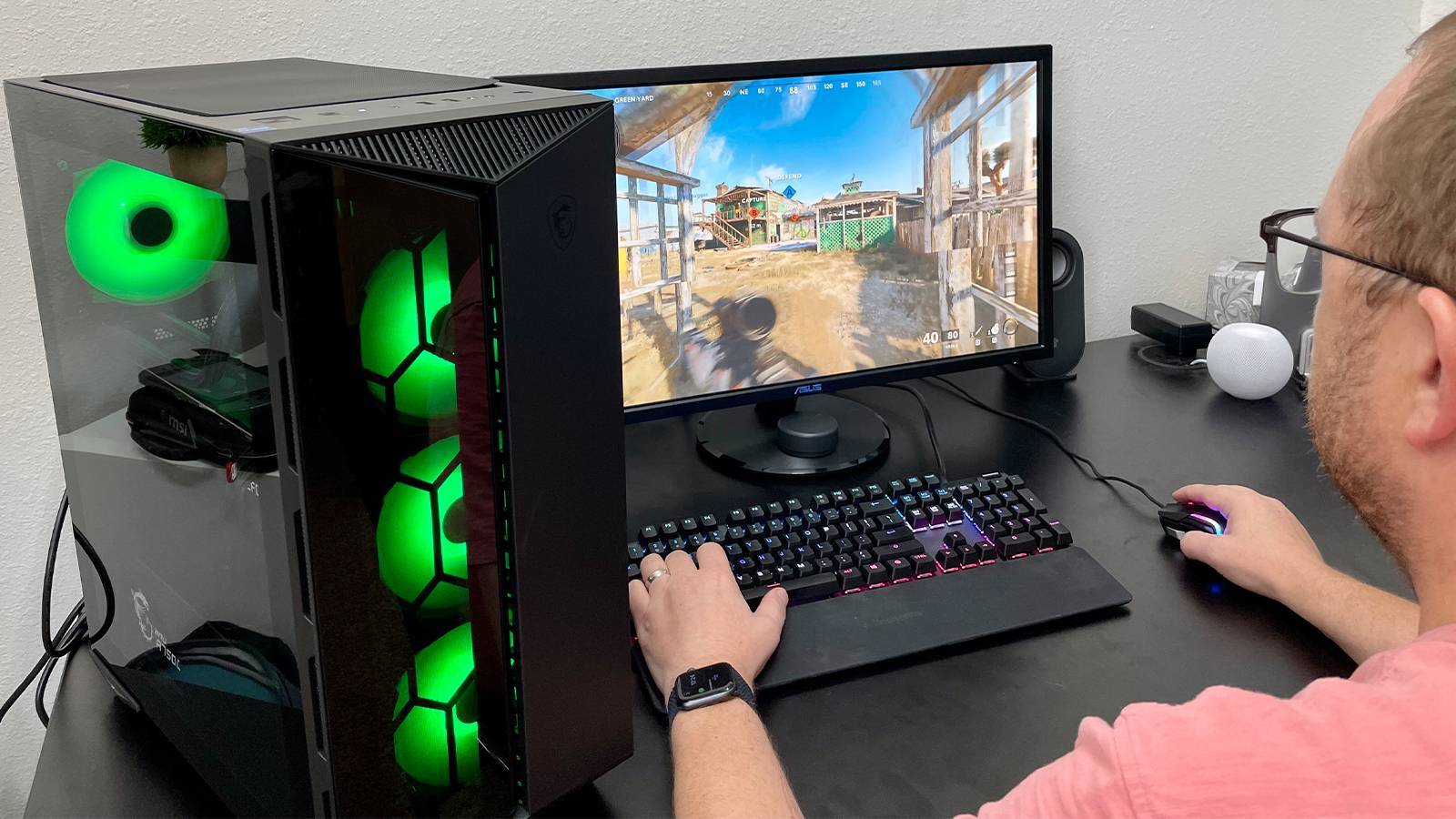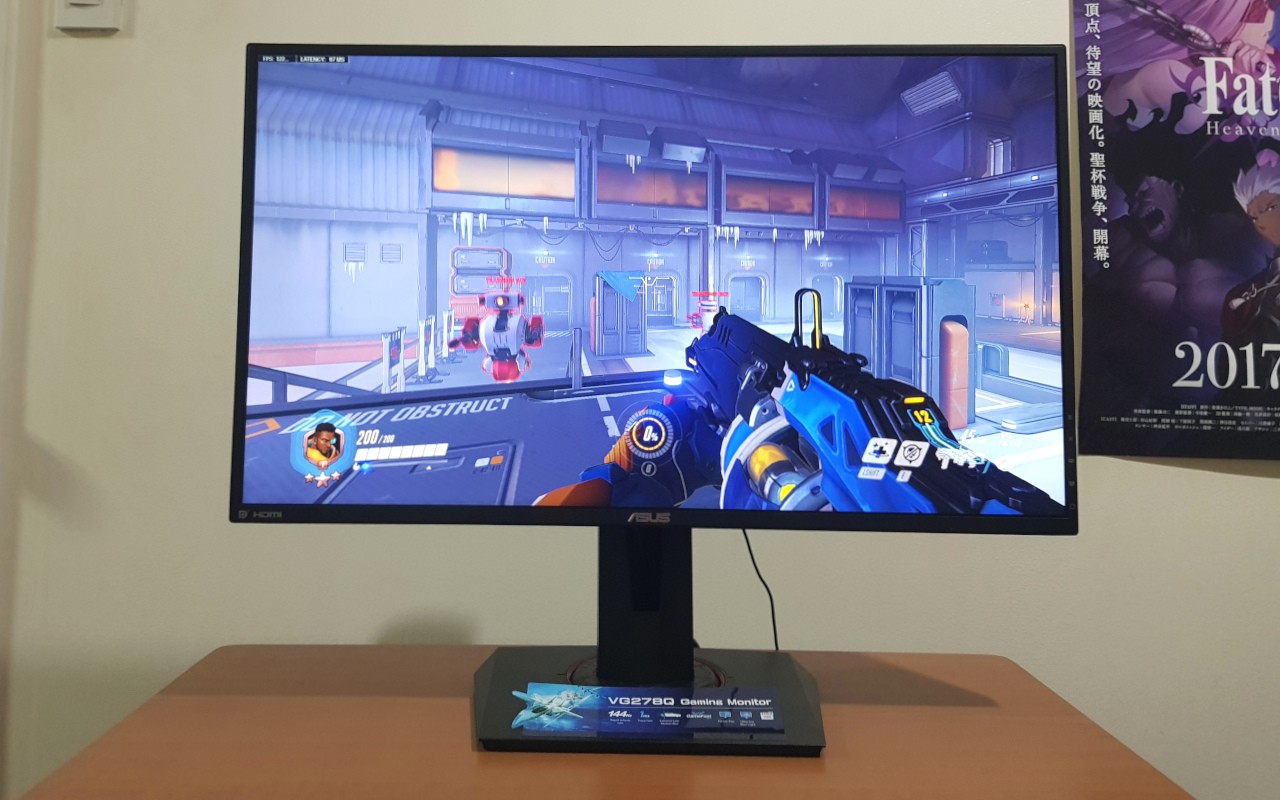Refresh Rate
When it comes to gaming monitors, one of the essential features to consider is the refresh rate. The refresh rate refers to how many times per second a monitor updates the image displayed on the screen. It is measured in Hertz (Hz), and a higher refresh rate means a smoother and more fluid visual experience.
Gaming enthusiasts often strive for higher refresh rates as they significantly enhance gameplay. A low refresh rate can lead to motion blur, ghosting, and input lag, which can adversely affect a gamer’s performance.
Modern gaming monitors typically offer refresh rates of 60Hz, 120Hz, 144Hz, 240Hz, or even higher. While a 60Hz refresh rate is the minimum requirement for smooth gaming, many gamers prefer higher refresh rates to achieve the best performance possible.
Having a higher refresh rate allows the monitor to display more frames per second (FPS), making the visuals appear much smoother. This is especially noticeable during fast-paced action sequences, where a higher refresh rate reduces motion blur and provides more accurate tracking of moving objects.
In addition to smoother gameplay, a higher refresh rate can also improve the responsiveness of the monitor. This means that actions performed by the player, such as input from the keyboard or mouse, will be registered and displayed on the screen more quickly.
It’s worth noting that the benefits of a higher refresh rate are most noticeable when paired with a graphics card that can consistently deliver high FPS in games. If the graphics card cannot keep up with the monitor’s refresh rate, the benefits may be diminished.
Ultimately, the choice of refresh rate for a gaming monitor depends on personal preference and the level of gaming experience one desires. Gamers who prioritize smooth visual performance and fast responsiveness may opt for a monitor with a higher refresh rate, while others may find a lower refresh rate sufficient for their needs and budget.
What Is a Gaming Monitor?
A gaming monitor is a specialized display designed specifically for gaming purposes. While regular monitors can be used for gaming, gaming monitors offer features and specifications that cater to the unique needs of gamers.
One of the key differentiators of a gaming monitor is its refresh rate, which refers to how quickly the monitor can update the image displayed on the screen. A higher refresh rate allows for smoother and more fluid gameplay, reducing motion blur and enhancing the overall gaming experience.
In addition to refresh rate, gaming monitors often have other features that contribute to improved visuals and gameplay. These include high resolutions, such as 1080p or 4K, which provide sharper and more detailed images. Wide viewing angles are also common, allowing gamers to view the screen from different positions without experiencing color distortion or loss of image quality.
Response time is another crucial aspect of gaming monitors. Response time refers to how quickly pixels can change from one color to another. A low response time ensures that fast-moving objects in games are displayed without ghosting or blurring, resulting in smooth and clear visuals.
Gaming monitors may also offer technologies like AMD FreeSync or NVIDIA G-SYNC, which help to synchronize the monitor’s refresh rate with the graphics card’s output, eliminating screen tearing and stuttering.
Ergonomics is an important consideration for gamers who spend long hours in front of their monitors. Many gaming monitors come with adjustable stands that allow users to find the most comfortable viewing angle. Some even offer features like swivel, tilt, and height adjustment. Additionally, gaming monitors often have thin bezels, providing a more immersive and seamless gaming experience when using multiple monitors in a multi-display setup.
Connectivity options are another factor to consider when choosing a gaming monitor. Most gaming monitors offer HDMI, DisplayPort, and sometimes DVI or VGA ports to accommodate a wide range of devices and gaming consoles.
Overall, gaming monitors are designed to enhance the gaming experience by providing superior visual performance, responsiveness, and comfort. With their specialized features and technologies, they offer gamers a competitive edge and a more immersive gaming environment.
What Is Refresh Rate?
Refresh rate refers to the number of times per second that a monitor updates the image displayed on the screen. It is measured in Hertz (Hz). The refresh rate determines how smooth and fluid the visuals appear during fast-paced action, making it a crucial factor for gamers.
Imagine watching a movie that’s been divided into several frames. The refresh rate determines how many of those frames are displayed on the screen per second. A higher refresh rate means more frames are shown, resulting in smoother motion and reduced motion blur. On the other hand, a lower refresh rate can lead to choppier visuals and noticeable input lag.
The most common refresh rate for monitors is 60Hz, meaning the image on the screen updates 60 times per second. However, nowadays, gaming monitors with higher refresh rates, such as 120Hz, 144Hz, 240Hz, or even higher, have become increasingly popular. These higher refresh rates provide an even smoother gameplay experience.
It’s important to note that the refresh rate is different from the frame rate (FPS) in games. While the refresh rate refers to how quickly the monitor can display new frames, the frame rate is determined by the performance of the computer or gaming console and can vary from game to game. Ideally, you want the frame rate to match or exceed the refresh rate to fully utilize the benefits of a high-refresh-rate monitor.
Higher refresh rates offer several advantages to gamers. Firstly, they make fast-paced action appear smoother without motion blur, allowing for more accurate tracking of moving objects and improved reaction times. This can greatly enhance the gaming experience, especially in competitive gaming genres like first-person shooters or racing games.
Additionally, higher refresh rates reduce input lag, which is the delay between a user’s action, such as pressing a button, and the corresponding action appearing on the screen. Low input lag is crucial for gamers, as it helps ensure that their actions are registered in real-time, providing a more responsive and immersive gaming experience.
When considering a refresh rate for a gaming monitor, it’s important to choose one that matches the capabilities of your graphics card or gaming console. For example, if your computer or console can only achieve 60 FPS in games, a 120Hz or higher refresh rate monitor may not provide a significant advantage.
In summary, the refresh rate of a monitor plays a vital role in gaming, influencing the smoothness of visuals and the responsiveness of gameplay. Higher refresh rates offer clearer, less blurry motion, reduced input lag, and a more immersive gaming experience overall.
How Does Refresh Rate Affect Gaming?
The refresh rate of a monitor has a significant impact on the gaming experience. It plays a crucial role in determining how smoothly and fluidly the visuals are displayed on the screen, affecting both gameplay and visual quality.
A higher refresh rate allows the monitor to update the image more frequently, resulting in smoother motion and reduced motion blur. This is particularly important in fast-paced games where quick reactions are necessary. With a higher refresh rate, gamers can track moving objects more accurately and react more swiftly, ultimately enhancing their gameplay performance.
One of the main advantages of a higher refresh rate is a reduction in input lag. Input lag refers to the delay between a user’s action, such as pressing a button or moving the mouse, and the corresponding action appearing on the screen. A lower input lag provides a more responsive gaming experience and can be a critical factor in competitive gameplay.
Furthermore, a higher refresh rate can improve the overall visual quality of a game. It allows for more frames to be displayed per second, which results in smoother animations and more lifelike visuals. This can be particularly noticeable in games with fast-moving objects or complex scenes.
However, it’s important to note that the benefits of a higher refresh rate are most prominent when paired with a capable graphics card or gaming console. If the hardware cannot consistently deliver a high frame rate, the advantages of a higher refresh rate may not be fully realized.
On the other hand, a low refresh rate can lead to several drawbacks in gaming. Motion blur can be more pronounced, making it difficult to track fast-moving objects and affecting the overall clarity of the visuals. Input lag may also be more noticeable, resulting in a less responsive gaming experience.
It’s worth mentioning that while a higher refresh rate can greatly enhance the gaming experience, it does not guarantee better gameplay on its own. Other factors such as resolution, graphics quality, and individual gaming skills also come into play. However, a higher refresh rate can provide a significant advantage by improving the fluidity, responsiveness, and visual clarity of games.
In summary, the refresh rate of a gaming monitor directly impacts the smoothness of gameplay, reduces motion blur, decreases input lag, and enhances the overall visual experience. It is an essential consideration for gamers looking to maximize their performance and immersion in the gaming world.
How Does Refresh Rate Impact Visuals?
The refresh rate of a gaming monitor not only affects gameplay but also has a significant impact on the visuals displayed on the screen. It plays a crucial role in determining the smoothness, clarity, and overall visual quality of the gaming experience.
A higher refresh rate allows the monitor to update the image more frequently, resulting in smoother motion. This means that fast-moving objects in games will appear more fluid and less choppy. The reduction in motion blur can greatly enhance the visual clarity, making it easier to track moving objects and improving the overall immersion in the game environment.
Furthermore, a higher refresh rate can improve the responsiveness of the visuals. It reduces the delay between the user’s input, such as pressing a button or moving the mouse, and the corresponding action being displayed on the screen. This instantaneous response enhances the realism and fluidity of the visuals, making the gaming experience more immersive and enjoyable.
Higher refresh rates also allow for more frames to be displayed per second, resulting in smoother animations and transitions. This is particularly noticeable in games with fast-moving scenes or complex visual effects, where a higher refresh rate can make the visuals appear more lifelike and realistic.
However, it’s important to note that the impact of refresh rate on visuals is most noticeable when paired with a graphics card or gaming console that can consistently deliver high frame rates. If the hardware struggles to keep up with the monitor’s refresh rate, the benefits may be diminished.
Conversely, a lower refresh rate can lead to drawbacks in the visual experience. Motion blur may be more pronounced, making it harder to track fast-moving objects and reducing the overall clarity of the visuals. This can have a negative impact on the immersive quality of the game.
In summary, the refresh rate of a gaming monitor directly impacts the visual quality of the gaming experience. A higher refresh rate results in smoother motion, reduced motion blur, improved responsiveness, and more lifelike animations. It enhances the overall immersion and enjoyment of the game, making the visuals appear clearer, sharper, and more realistic.
Benefits of Higher Refresh Rates in Gaming
Higher refresh rates in gaming monitors offer several advantages that can significantly enhance the overall gaming experience. These benefits encompass smoother gameplay, reduced motion blur, improved responsiveness, and increased visual clarity.
One of the primary advantages of higher refresh rates is the ability to display more frames per second (FPS). This results in smoother and more fluid gameplay, particularly in fast-paced action sequences. Gamers can experience better tracking of moving objects, sharper image transitions, and a more immersive gaming environment.
Reduced motion blur is another benefit of higher refresh rates. A higher refresh rate minimizes the persistence of each frame on the screen, resulting in less blur during fast motion. This helps gamers to react more quickly and accurately, particularly in competitive gaming scenarios where split-second decisions are crucial.
Higher refresh rates also contribute to improved responsiveness and input lag reduction. A lower input lag ensures that the actions performed by gamers, such as button presses or mouse movements, are translated more quickly into on-screen actions. This enables a more precise and instantaneous gaming experience, providing a competitive advantage and enhancing overall gameplay performance.
Visual clarity is greatly enhanced with higher refresh rates. More frames per second displayed on the screen allow for smoother animations and transitions, reducing judder and stuttering in graphics. This results in a more realistic and immersive visual experience, allowing gamers to fully appreciate the details and intricacies within the game world.
Furthermore, higher refresh rates can enhance the overall enjoyment and comfort of gaming sessions. The smoothness and fluidity provided by a high refresh rate monitor lead to less eye strain and fatigue, allowing for longer and more comfortable gaming sessions without compromising visual quality.
It is important to note that the benefits of higher refresh rates are most apparent when paired with a capable graphics card or gaming console that can consistently deliver high frame rates. If the hardware cannot keep up with the monitor”s refresh rate, the advantages may be diminished.
In summary, higher refresh rates in gaming monitors offer numerous benefits including smoother gameplay, reduced motion blur, improved responsiveness, increased visual clarity, and enhanced comfort. These advantages contribute to a more immersive and enjoyable gaming experience, allowing gamers to fully engage in the virtual world and maximize their gaming performance.
Factors to Consider When Choosing a Gaming Monitor’s Refresh Rate
When selecting the refresh rate for a gaming monitor, several factors should be taken into consideration to ensure the optimal gaming experience. These factors include the capabilities of the hardware, the type of games you play, and your personal preferences.
Firstly, consider the capabilities of your graphics card or gaming console. To fully utilize a higher refresh rate monitor, you need a system that can consistently achieve high frame rates in games. A powerful graphics card or gaming console will be able to deliver the necessary FPS to match the monitor’s refresh rate, maximizing the benefits of a high refresh rate display.
The type of games you play is also important to consider. Some genres, such as first-person shooters or racing games, heavily rely on fast movements and quick reactions. In these cases, a higher refresh rate of 144Hz or above can greatly enhance the smoothness and responsiveness of gameplay, providing a competitive advantage. On the other hand, if you primarily play slower-paced games that don’t involve rapid movements, a lower refresh rate may be sufficient to meet your needs.
Another factor to consider is your personal preference. Some gamers may prioritize visual smoothness and real-time responsiveness, opting for a higher refresh rate, even if it means sacrificing other features or incurring higher costs. Others may find a lower refresh rate to be perfectly adequate for their gaming style and budget. It’s important to assess your own gaming habits and expectations to determine the ideal refresh rate for your needs.
Budget is another important consideration. Higher refresh rate monitors can come at a premium price compared to those with lower refresh rates. If budget constraints are a concern, you may need to find a balance between refresh rate, price, and other features that are important to you, such as resolution or panel technology.
It’s also worth considering future-proofing your gaming monitor. While 60Hz was once the standard, higher refresh rates such as 144Hz or 240Hz have become increasingly popular. Investing in a monitor with a higher refresh rate now may provide a more enjoyable gaming experience for years to come as gaming technology continues to advance.
In summary, when choosing a gaming monitor’s refresh rate, consider the capabilities of your hardware, the types of games you play, your personal preferences, budget constraints, and the potential for future upgrades. By considering these factors, you can select the refresh rate that best suits your gaming needs and provides an optimal gaming experience.
Common Refresh Rates for Gaming Monitors
Gaming monitors come in a variety of refresh rates, each offering a different level of visual performance and gaming experience. While 60Hz has long been the standard, higher refresh rates have gained popularity in recent years. Here are some of the most common refresh rates found in gaming monitors:
- 60Hz: 60Hz is the baseline refresh rate found in many monitors. While it provides a smooth and adequate gaming experience, it may not be ideal for fast-paced action or competitive gaming.
- 75Hz: A step up from 60Hz, 75Hz offers a slightly smoother gaming experience. It provides a modest improvement in motion clarity and responsiveness compared to 60Hz.
- 120Hz: 120Hz is a popular refresh rate for gaming monitors. It offers a significant improvement over 60Hz, delivering smoother motion, reduced motion blur, and improved responsiveness. Many gamers find 120Hz to be a good balance between performance and cost.
- 144Hz: 144Hz is considered the sweet spot for many gamers. It provides exceptionally smooth gameplay with minimal motion blur and excellent responsiveness. It has become the standard refresh rate for competitive gaming due to its ability to handle high FPS in fast-paced games.
- 240Hz: 240Hz is the highest refresh rate commonly found in gaming monitors. It offers an incredibly smooth gaming experience with minimal motion blur. This high refresh rate is especially appealing to professional gamers and enthusiasts who prioritize performance and want the most fluid visuals possible.
It’s important to note that to fully appreciate the benefits of higher refresh rates, your hardware needs to be capable of delivering high frame rates consistently. A powerful graphics card or gaming console will ensure that you can take advantage of the smoothness and responsiveness offered by these higher refresh rates.
When choosing a refresh rate for a gaming monitor, consider your gaming preferences, the types of games you play, and your budget. If you primarily play fast-paced and competitive games, a higher refresh rate like 144Hz or 240Hz may be the best choice. However, for more casual gaming or budget-conscious gamers, a refresh rate of 75Hz or 120Hz can still provide a smooth and enjoyable gaming experience.
In summary, common refresh rates for gaming monitors range from 60Hz to 240Hz, with each refresh rate offering varying levels of smoothness, motion clarity, and responsiveness. The choice of refresh rate ultimately depends on your gaming preferences, the types of games you play, and your budget.
Refresh Rate vs. Response Time: What’s the Difference?
When looking for a gaming monitor, you may come across two important specifications: refresh rate and response time. While they both contribute to the overall gaming experience, they are distinct features that serve different purposes.
The refresh rate refers to how many times per second a monitor updates the image displayed on the screen. It is measured in Hertz (Hz). A higher refresh rate means that the screen can display more frames per second (FPS), resulting in smoother and more fluid visuals. A higher refresh rate reduces motion blur and improves the overall smoothness and clarity of the gaming experience.
On the other hand, response time measures how quickly a pixel can change from one color to another. It is typically measured in milliseconds (ms). A lower response time indicates that pixels can change colors more quickly, minimizing ghosting or blurring in fast-paced scenes. A low response time is important for reducing motion artifacts and enhancing the clarity of moving images.
While both refresh rate and response time contribute to visual quality, they address different aspects of the gaming experience. The refresh rate focuses on how smoothly the image is updated on the screen, whereas the response time determines the speed at which individual pixels can change colors.
It is worth noting that a higher refresh rate and a lower response time can complement each other to provide the best overall gaming experience. A higher refresh rate ensures smoother motion and reduces motion blur, while a low response time minimizes ghosting and delivers sharper, more precise visuals.
When considering refresh rate and response time, it’s important to understand your gaming preferences and the types of games you play. If you play fast-paced games that require quick reactions and precision, both a higher refresh rate and a low response time are desirable. However, for slower-paced games or casual gaming, a slightly lower refresh rate or response time may still provide an enjoyable experience.
In summary, the refresh rate determines how smoothly the image is updated on the screen, resulting in fluid and clear visuals. The response time, on the other hand, measures how quickly pixels can change colors, reducing motion blur and improving image clarity. While both are important factors in choosing a gaming monitor, it’s important to consider your gaming preferences and the types of games you play to determine the ideal balance between refresh rate and response time for your gaming needs.
Does Refresh Rate Matter for Console Gaming?
Refresh rate is an important consideration for gaming, but its significance may vary when it comes to console gaming. Unlike PC gaming, console gaming is typically limited by the capabilities of the gaming console and the games themselves.
Most gaming consoles, such as PlayStation and Xbox, are designed to output games at a standard frame rate of 30 or 60 frames per second (FPS). As a result, a console typically supports a maximum refresh rate of 60Hz. In this case, having a higher refresh rate monitor, such as 120Hz or 240Hz, will not provide any noticeable benefit in terms of smoother gameplay or reduced motion blur.
However, there can be exceptions. Some newer gaming consoles like the PlayStation 5 and Xbox Series X support higher frame rates, such as 120 FPS. In such cases, a higher refresh rate monitor can make a meaningful difference by allowing players to experience smoother and more fluid gameplay. The increased refresh rate can reduce motion blur and improve responsiveness, enhancing the gaming experience.
It’s also important to note that even if a console game runs at a lower frame rate, a higher refresh rate monitor can still provide some advantages. The higher refresh rate can improve the clarity of motion and reduce screen tearing, resulting in a more visually pleasing experience.
Aside from refresh rate, other factors such as resolution, input lag, and panel type can still impact the gaming experience on consoles. Choosing a monitor with a higher resolution, low input lag, and better color accuracy can enhance the overall visual quality, regardless of the refresh rate.
Ultimately, the impact of refresh rate for console gaming depends on several factors, including the capabilities of the gaming console and the specific games being played. If you own a console that supports higher frame rates, investing in a higher refresh rate monitor can be beneficial. However, for consoles limited to 30 or 60 FPS, a higher refresh rate monitor may not provide noticeable improvements and other factors may play a more crucial role in optimizing the gaming experience.
It’s important to do thorough research and consider personal preferences when selecting a gaming monitor for console gaming, taking into account factors like resolution, input lag, and panel type, in addition to the refresh rate.
Conclusion
In conclusion, the refresh rate of a gaming monitor plays a crucial role in the overall gaming experience. A higher refresh rate offers smoother gameplay, reduced motion blur, improved responsiveness, and increased visual clarity. It allows for more frames per second to be displayed on the screen, resulting in smoother animations and transitions.
When choosing a gaming monitor’s refresh rate, it’s essential to consider factors such as the capabilities of your hardware, the types of games you play, and your personal preferences. If you have a powerful graphics card or gaming console that can consistently deliver high frame rates, opting for a higher refresh rate monitor, such as 144Hz or 240Hz, can provide significant advantages in terms of visual performance and responsiveness.
However, it’s important to note that the benefits of a higher refresh rate may be diminished if your hardware cannot match the monitor’s capabilities. In such cases, a lower refresh rate monitor like 60Hz or 75Hz may still provide a satisfactory gaming experience at a more affordable price point.
In addition to refresh rate, other factors such as resolution, input lag, response time, and panel type should also be considered when choosing a gaming monitor. These factors can further enhance the visual quality and overall gaming experience.
Ultimately, the perfect refresh rate for a gaming monitor will depend on your individual preferences, gaming habits, and budget. Consider the type of games you play, the capabilities of your hardware, and how smooth and responsive you want your gaming experience to be. By making an informed decision, you can select the ideal refresh rate that caters to your gaming needs and allows you to fully immerse yourself in the world of gaming.







